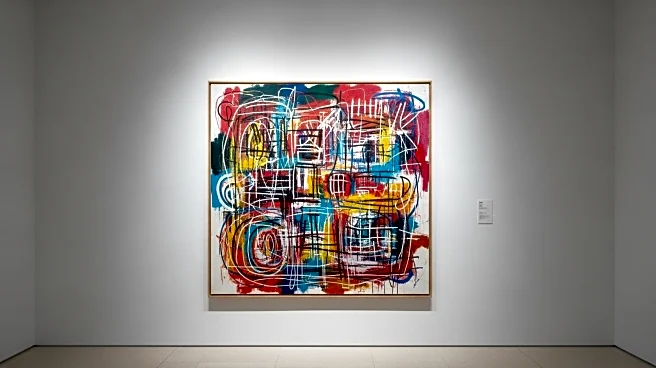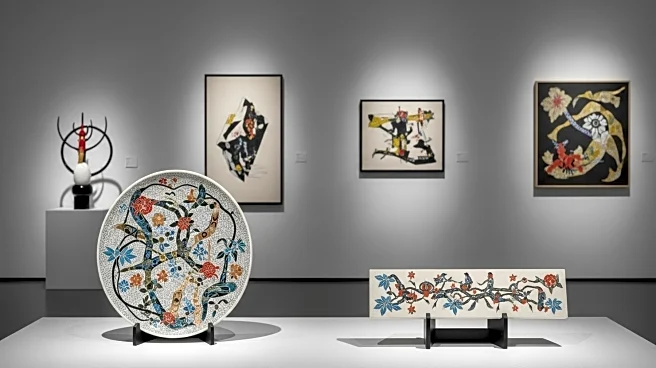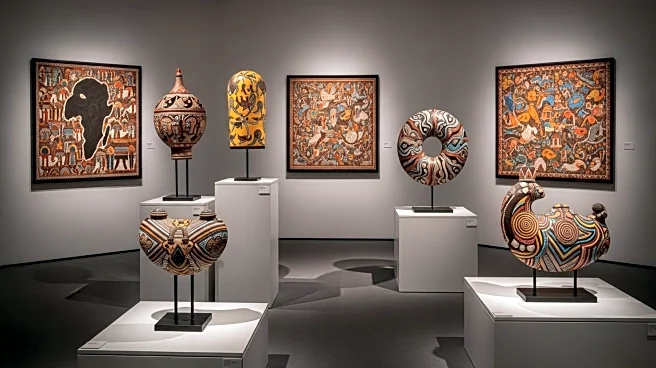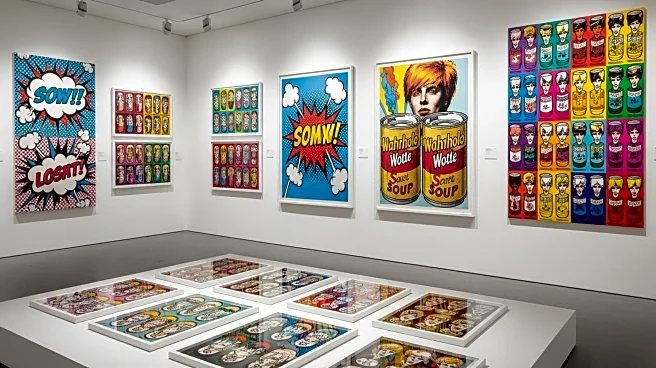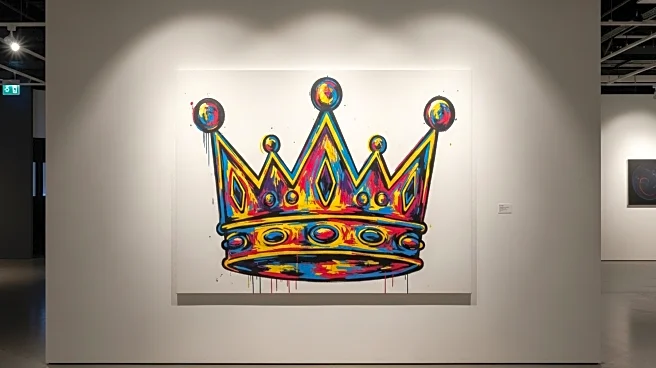What's Happening?
The art market has experienced a notable shift in the first half of 2025, with sales declining across most price ranges except for the $1 million-to-$10 million bracket. This segment saw a 13.8 percent increase in sales, totaling $1.6 billion, and a 6.7 percent rise in the number of works sold compared to the same period in 2024. This growth contrasts sharply with the top end of the market, where sales of artworks valued over $10 million fell by 43.4 percent to $515.4 million, marking the fewest lots sold in a decade. The $100,000-to-$1 million range also contracted by 8 percent, while the $10,000-to-$100,000 and under-$10,000 segments saw declines of 10.1 percent and 9.8 percent, respectively.
Why It's Important?
The growth in the $1 million-to-$10 million bracket suggests a potential stabilization in a segment that had previously experienced significant contraction. This trend may indicate a shift in collector preferences or investment strategies, as buyers gravitate towards mid-range artworks that offer a balance of prestige and investment potential. The decline in the top-end market could reflect broader economic uncertainties or a recalibration of value perceptions among high-net-worth individuals. The contraction in lower price ranges challenges narratives about the strength of the entry-level market, highlighting potential barriers for new collectors or shifts in auction dynamics.
What's Next?
The art market may continue to see adjustments as collectors and investors respond to economic conditions and market trends. Auction houses and galleries might focus on curating offerings within the $1 million-to-$10 million range to capitalize on its growth. Additionally, industry stakeholders may explore strategies to reinvigorate interest in both the high-end and entry-level segments, potentially through innovative marketing or new sales platforms. The evolving market dynamics could also prompt further analysis and adaptation by art market analysts and financial advisors.


